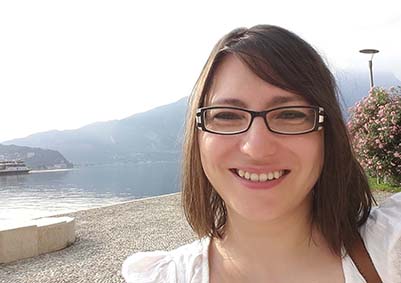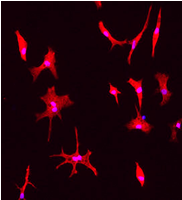Getting to the roots of Parkinson’s disease
Parkinson’s disease causes brain cells that produce the neurotransmitter dopamine to die. But where does the disease start? Evidence suggests that a failure of the brain’s immune system may be the root cause of the disease. Amalia Dolga, Assistant Professor at the University of Groningen’s Department of Molecular Pharmacology, has received a grant from the Dutch charity Stichting ParkinsonFonds to investigate this hypothesis using patient-derived cells.
Parkinson’s disease is a neurodegenerative disease in which dopamine-producing brain cells die, negatively affecting patients’ motor functions. However, it is not clear why these brain cells die. ‘Immune cells in the brain called microglia could play a role’, explains Amalia Dolga. A classic symptom of Parkinson’s disease is the occurrence of ‘Lewy bodies’ in brain cells. ‘These are clumps of a protein called alpha-synuclein. Normally, the microglia remove these clumps. There are indications that this failure to clean up the brain leads to the symptoms of Parkinson’s.’

New technique
Together with her colleague Arjan Kortholt, Associate Professor in Cell Biochemistry, Dolga has received a € 250,000 grant from the Dutch charity ParkinsonFonds to investigate why microglia malfunction. Of course, obtaining brain cells from patients is next to impossible. However, Dolga has pioneered a new technique to produce microglia from stem cells. The technique starts with normal cells from a patient, which are treated to become induced stem cells. Next, they are coaxed to develop into microglia. ‘The method for doing this is very new, and my lab is one of the first in the Netherlands to master it’, says Dolga.
One possible consequence of the mutation is that mitochondria, the cell’s ‘engine’, malfunction. Dolga has studied this organelle in various conditions of oxidative stress and cell death. ‘Again, the question is how this organelle works in patients with Parkinson’s disease. Many experiments have been done in mice and rats, but these are not always a good model for humans. That is why we wanted to work with human cells.’

Human cells
With a postdoctoral researcher, Dolga will produce microglia from the cells of Parkinson’s patients that have a number of different mutations. ‘In these cells, we will measure a number of different properties, from energy production to the ability to move towards a target and the uptake of protein aggregates’, explains Dolga. The patients’ cells will be provided by the Deutches Zentrum für Neurodegenerative Erkrankunngen (German Centre for Neurodegenerative Diseases) in Tübingen and the Erasmus Medical Center in Rotterdam, in collaboration with Prof. Vincenzo Bonifati. These research centres will provide three patient samples for each of the four different mutations.
The project should show more clearly how the immune system contributes to Parkinson’s disease. As Kortholt explains, ‘There is still a debate going on as to whether Parkinson’s is a brain disease, an immune disease or both.’ Furthermore, the study will look at two mutations in other genes, to see if they also affect LRRK2. As this gene appears to be involved in many patients’ symptoms, Kortholt is also eager to study the effect of an LRRK2 inhibitor. ‘There are many types of inhibitors, but most of them also affect other organs, like the kidneys. This causes serious side effects, so they can’t be used as drugs.’ Kortholt has discovered inhibitors which reduce LRRK2 activity by about 50 percent. ‘These seem to have no side effects. We really want to test them on these human cells.’
Kortholt has done a lot of previous work on Parkinson’s disease. ‘We have studied a number of mutations, and concluded that an enzyme called LRRK2 plays a crucial role’, he explains. This enzyme works too hard in Parkinson’s patients. ‘In some cases, this is caused by a mutation of the LRRK2 gene, but in other cases, the mutation is located in another gene but still affects the function of LRRK2’, he summarizes.

Microglia
The grant from the Dutch ParkinsonFonds will allow the scientists to get to the root of Parkinson’s disease over the next two years. The ParkinsonFonds foundation has spent some € 18 million on research over the last 20 years. Project proposals that are sent to ParkinsonFonds are selected by an international review committee. It is remarkable that Dolga and Kortholt were awarded this grant, as it is the first time that ParkinsonFonds has funded a proposal from scientists who are not physicians. But with their combined knowledge on Parkinson’s disease and the production of patient-derived microglia, they hope to bring us one step closer to a better treatment.
